Ben Valsler
For the next element in our updated periodic table series, Kit Chapman unearths an unlikely collaboration.
Kit Chapman
The hunt for element 114 was probably the longest quest for an element on the periodic table. The attempt to fill the ‘gaps’ of the periodic table stretched thirty years; but at the extremes of the table, the hunt for flerovium, from the first attempts until its discovery in 2012, took at least forty years of cold war rivalry.

By the 1960s, it was clear that the half-lives of man-made elements were getting shorter and shorter, crumbling to instability. As the Russian and American teams competed to discover elements 102-106, the so-called ‘transfermium wars’, a new theory for the atomic nucleus also began to bear fruit.
In 1949, two separate groups had put together a new theory about the nucleus. Led by Maria Goeppert-Meyer and Hans Jensen, the idea was simple: the nucleus wasn’t a drop of water, but shells, with clusters of protons and neutrons more tightly bound together than others. Goeppert-Meyer explained it like a ballroom full of waltzers, all spinning in their own way to create the whole. For Paul Wigner, one of Goeppert-Meyer's colleagues, it was amazing. If the closed shells were true, then some numbers of protons and neutrons would be more stable than others. He called them ‘magic numbers’. Goeppert-Meyer, Jensen and Wigner would win the Nobel prize for their work.
This magic number theory meant that rather than the elements proceeding to a shorter and shorter existence, there could be a patch in the chart of protons and neutrons where the half-lives would be longer. It was called the island of stability and the first obvious target was element 114. Theoreticians speculated that it could have a radioactive half-life of over a million years. For Glenn Seaborg, the Nobel laureate who had discovered plutonium, it was a lifelong dream to see element 114. As he wrote in his autobiography:
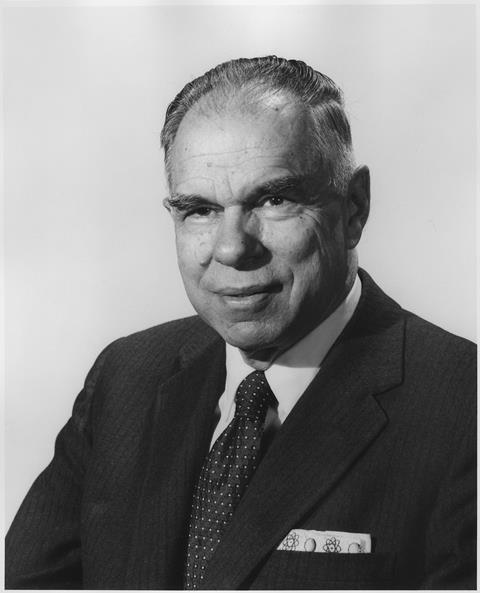
'It was still exciting for me to synthesise elements, to investigate the dream of finding the superheavy elements – the elements in the region of number 114. The half-lives of the elements were getting shorter as they grew heavier, but I believed there might be an “island of stability” near the end of the row on the periodic table.'
Experiments ran into the 1970s. In a 1973 interview with Ebony magazine, James Harris, later credited with discovering element 104 and thus making him the first African-American to discover a new element, explained it all. 'Within a year or less,' Ebony reported, Harris and the team at Lawrence Berkeley National Laboratory would 'leap past the immediate region after element 105 all the way to 114 and beyond'. Harris, it argued, was 'clearly on the brink of discovery... [talking] about his role as a chemist with an enthusiasm matched only by a baseball fan participating in a grand slam.'
Harris did see a baseball victory that year – his hometown of Oakland saw the Athletics win the world series. But element 114 never came. The idea ended up shelved until the 1990s, when teams from the Joint Institute for Nuclear Research in Dubna, USSR, and Lawrence Livermore National Laboratory in the US decided to collaborate.
This collaboration started with a meeting of Livermore's Ken Hulet and Dubna's Georgy Flerov, Seaborg's great cold war rival. For the better part of the 20th century, Flerov and Seaborg had raced for discoveries, and were still embroiled in a pitched battle over the right to name elements 102 to 106. But the Dubna-Livermore collaboration was something new, a breakthrough in East-West relations, the thawing of the cold war for the first time. Sadly, Flerov died shortly after the meeting; instead, his protégé, Yuri Oganessian, took over the Russian side of the experiment, with the Livermore team headed by Ken Moody and Ron Lougheed.
In December 1998, the team was ready to go. Oganessian's lab fired a beam of calcium-48 into plutonium-244 in a process called 'hot fusion'. It made a single atom of element 114. Previously, elements this far into the periodic table had broken up in the blink of an eye. This new atom lasted 30 seconds.
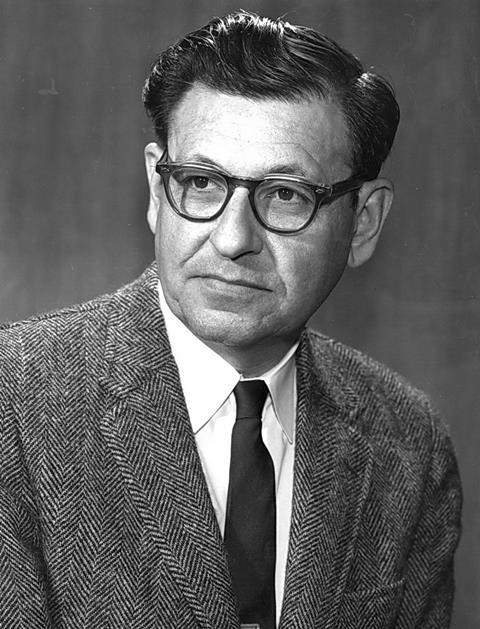
When Al Ghiorso, one of the leaders of the Berkeley lab, heard the news of the discovery all the cold war animosity faded away. Seaborg had suffered a stroke a few months earlier and Ghiorso remembered how much his friend had wanted to see that magic element. As Ghiorso recalled:
'I wanted Glenn to know, so I went to his bedside and told him. I thought I saw a gleam in his eye.'
Seaborg died in February 1999. In March, two new atoms of 114 were created. Within a decade, other labs had confirmed the discovery. It was the first element made in partnership between the US and Russia, the two cold war enemies finally coming together. The half-lives were not the millions of years predicted – the island of stability itself remains tantalisingly out of reach, just eight neutrons away – but the magic number theory seems to hold.
Naming element 114 was almost as tricky as making it. The person who had ensured the collaboration had been Flerov, but he would have been a very controversial choice, for his role in the Soviet atomic bomb project meant the Americans might have a problem. Instead, with some fast footwork, the collaboration came up with a brilliant wheeze: the element was named after his lab: the Flerov Laboratory of Nuclear Reactions. And so, flerovium joined seaborgium on the periodic table, the two cold war rivals would be immortalised forever.
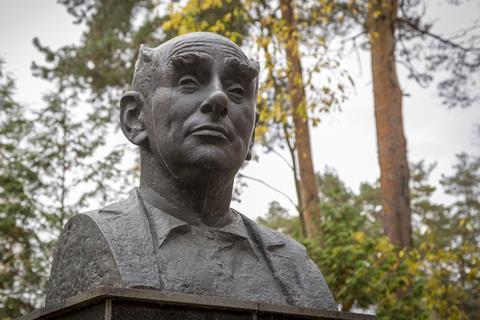
Ben Valsler
Kit Chapman on flerovium, a deftly named superheavy element borne from a breakthrough collaboration. Coming up next, we remain in joint custody of the US-Russian teams, as they continue their path along the periodic table.
Kit Chapman
Now, Dubna was the centre for element discovery universe, ably supported by collaborators from Lawrence Livermore National Laboratory. By 2012, the collaboration had already discovered the elements 114 and 116. And now it was going to complete the eighth row of the periodic table.
Ben Valsler
Join Kit next time to find out more. In the mean time, visit our element-inspired collection at chemistryworld.com/periodic-table, and get in touch with any questions or comments: email chemistryworld@rsc.org or tweet @chemistryworld. Thanks for listening, I’m Ben Valsler.
Ununquadium
Our original podcast on element 114, by Brian Clegg, was written long before it had been named. We've saved it here for posterity:
Since this podcast was first published, the name of this element has been ratified as flerovium (symbol Fl) by the International Union of Pure and Applied Chemistry (Iupac). The name recognises Russian physicist Georgiy Flerov, who discovered the spontaneous fission of uranium. Flerov also gives his name to the laboratory at the Joint Institute for Nuclear Research in Dubna, Russia, where the element was first made.
Meera Senthilingam
This week we are element spotting with Brian Clegg
Brian Clegg
It's easy to accuse the scientists who produce new, very heavy elements of being chemistry's train spotters. Just as train spotters spend hours watching for a particular locomotive so they can underline it in their book, it may seem that these chemists laboriously produce an atom or two of a superheavy element as an exercise in ticking the box. But element 114 has provided more than one surprise, showing why such elements are well worth investigating.
This is one of the elements that is still waiting to have a proper name assigned to it, so it remains for the moment ununquadium (just one-one-four-ium in truncated Latin), with the symbol Uuq, until it receives a more aesthetically pleasing label.
Element 114 sits in an island of stability, a position in the periodic table where a spherical nuclear configuration suggests that half lives should be relatively long. That word 'relatively' is important. Where, for instance, darmstadtium, which precedes the island of stability, has a typical half life measured in microseconds, element 114's isotope with atomic mass 289 stays around for seconds at a time.
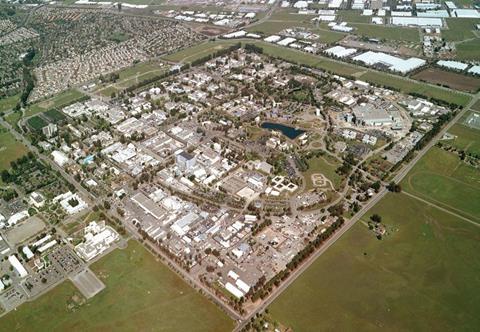
In principle, there is an isotope of element 114 that should do even better. The expectation, long before 114 was even produced, was that ununquadium 298 should be particularly stable. The nucleus of this isotope would have 114 protons and 184 neutrons, which should provide complete energy levels in the nucleus and hence unusual stability. Ununquadium 298 has a predicted half life that could reach into thousands of years – remarkable for the transfermium elements, which are generally the mayflies of the periodic table.
To date we haven't been able to test this thesis, because no isotope 298 has been produced. The first sighting of element 114 was in 1998 at the Joint Institute for Nuclear Research at Dubna in Russia. This doesn't mean that we can look forward to dubnium as a name for the element, this is already assigned to element 105.
Using a plutonium 244 target, produced by Kenton Moody at the Lawrence Livermore National Laboratory in California, the team lead by Yuri Oganessian and Vladimir Utyonkov in Dubna took aim with a stream of high energy calcium 48 ions. This rare, but naturally occurring isotope of calcium was blasted into the plutonium for 40 days, during which 5 million trillion ions were shot down the accelerator. Just one, single atom of the isotope 289 of element 114 was discovered, which took 30.4 seconds to decay.
The team at Dubna have since produced tiny quantities of isotopes 286, 287 and 288. Interestingly the half life of 30 seconds for that first atom has never been reproduced – all subsequent ununquadium 289 has had a half life of around 2.6 seconds, leading to speculation that the first experiment produced a special excited state of the nucleus called a nuclear isomer, a state which typical has an extra-long half life.
Unlike many transfermium elements, element 114 was predicted to fit well into its group in the periodic table. It is positioned in group 14, underneath lead. The first great success of the periodic table was Mendeleev's prediction of the existence of elements that had yet to be discovered. There were gaps in his table where he placed elements that he named after the element immediately above. He constructed the names by adding the prefix eka, which is Sanskrit for the number 'one'. So, Mendeleev said, we should have eka-boron, eka-aluminium, eka-manganese and eka-silicon.
Eka-silicon, for instance, is now called germanium and measured up well to Mendeleev's predictions. Similarly, for a long time it was assumed that element 114 would be eka-lead, with properties like that metal. Remarkably, however, although atoms have only been produced in ones and twos, there is some evidence that ununquadium behaves more like a noble gas than a metal.
This concept, still to be fully explored, is based on experiments where the element 114 atoms are passed down a tube with an inner coating of gold. Along the length of the tube, the temperature gradually decreases, dropping from 15 degrees Celsius to a chilly minus 185 degrees, gradually reducing the energy of the atoms passing along, making them easier to capture. The prediction is that a metal with lead-like properties should bind onto the gold easily, so will not get far down the tube. But a noble gas would have to be significantly chilled to undergo adsorption from the weak van der Waals force.
Rather than behaving like lead, element 114 seems to make it to the cold end of the tube before being captured, its position detected when it decays after a second or two. This experiment, conducted by Heinz Gaeggeler of the Paul Scherrer Institute in Villigen, Switzerland, but working at Dubna is still only provisional, but the noble gas behaviour may be a result of relativistic effects.
Einstein's special relativity predicts that particles will get heavier and heavier as their velocity gets closer to the speed of light. A particle accelerated to around 42 per cent of the speed of light, for instance, will have a 10 per cent increase in mass. The expectation is that with an unusually high number of protons in the nucleus, the electrons will be moving fast enough to have relativistic effects that change the profile of their orbit, and hence the element's chemical properties.
With such few atoms to experiment with, the result is not yet certain. But something we do know for sure is that ununquadium is not just of interest to chemical train spotters.
Meera Senthilingam
That was science writer and chemical spotter Brian Clegg with the chemistry of element 114. Now next week, a dangerous yet useful element.
Andrea Sella
Because it's so volatile, you need to be really careful when you handle it since if you inhale it, it will decompose releasing poisonous carbon monoxide and dumping metallic nickel into your lungs. So it's very dangerous indeed. But in a way, that's the beauty of it: nickel carbonyl is incredibly fragile. If you heat it up it shakes itself to pieces, and you get both the nickel and the carbon monoxide back. So what Mond had was a deliciously simple way to separate and purify nickel from any other metal. And what is more, he could recycle the carbon monoxide.
Meera Senthilingam
And to find out the uses and chemistry of the pure form of nickel, as well as its compounds, join UCL's Andrea Sella in next week's Chemistry in its element. Until then I'm Meera Senthilingam and thank you for listening.
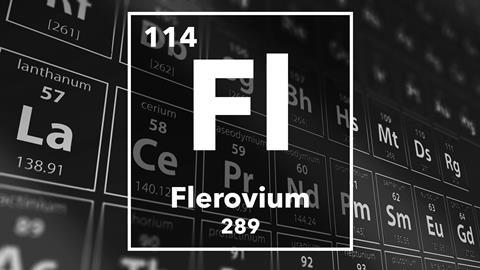






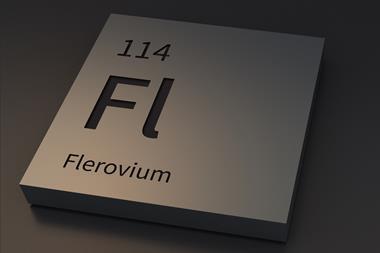





No comments yet